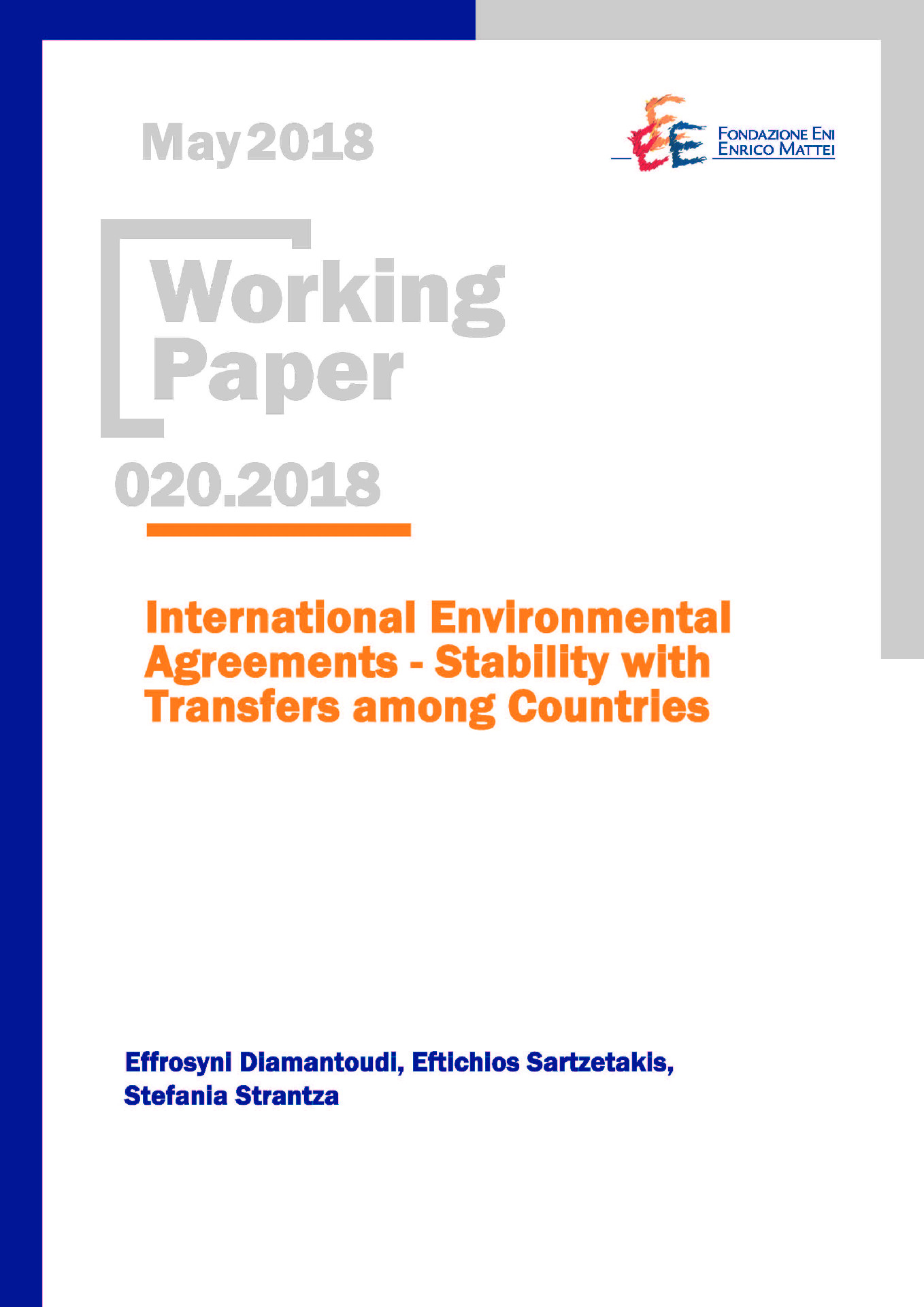International Environmental Agreements – Stability with Transfers among Countries

24.05.2018
Q5, Q54
International Environmental Agreements, Heterogeneous Countries, Transfers
Climate and Sustainable Innovation
Massimo Tavoni
The paper examines the stability of self-enforcing International Environmental Agreements (IEAs) among heterogeneous countries, allowing for transfers. We employ a two-stage, non-cooperative model of coalition formation. In the first stage each country decides whether or not to join the agreement, while in the second stage countries choose their emissions simultaneously. Coalition members agree also to share the gains from cooperation in the first stage. We use quadratic benefit and environmental damage functions and assume two types of countries differing in their sensitivity to the global pollutant. In examining the impact of transfers on the coalition size, we apply the notion of Potential Internal Stability (PIS). Results show that transfers can increase cooperation among heterogeneous countries. However, the increase in the coalition size, relative to the case without transfers, comes only from countries belonging to the type with the lower environmental damages, which are drawn into the coalition by the transfers offered. Furthermore, the level of cooperation increases with the degree of heterogeneity. However, the reduction in aggregate emissions achieved by the enlarged coalition is very small leading to dismal improvement in welfare, which confirms the “paradox of cooperation”.
***
Suggested citation: Diamantoudi, E., E. Sartzetakis, S. Strantza, (2018), ‘International Environmental Agreements – Stability with Transfers among Countries’, Nota di Lavoro 20.2018, Milano, Italy: Fondazione Eni Enrico Mattei
